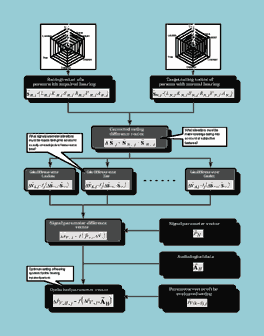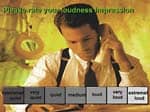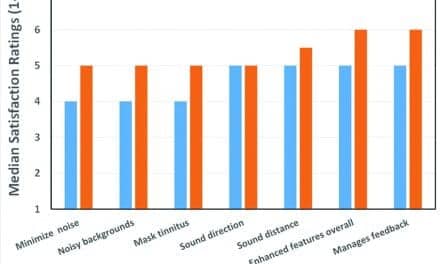Part 1: Development and implementation of a patient-centered, interactive fitting system
This two-part article describes the development and implementation of a hearing instrument fitting system that is presently in widespread use in Europe. The system, A-Life 9000 which was developed in Germany by Geers Hörakustic, is predicated on the fundamental premise that, if given the correct tools, hearing instrument users can effectively help accomplish significant and measurable improvements in the performance configuration of their hearing instruments. This is designed to have the net effect of creating higher user and fitter satisfaction.
Background and Rationale
Unquestionably, many significant technical improvements in hearing instruments have been realized over the past several decades. The widespread introduction of dynamic range compression circuitry, flexible programmable active filters, directional microphones and dramatic increases in miniaturization are just a few worth mentioning.
Additionally, societal changes (e.g., demographics, greater prosperity and activity among retirees, increased noise exposure for all ages) and changing consumer expectations for speed and capacity in electronic products have ramifications for future hearing instrument design and acceptance.1,2 On a more global basis, at least four fundamental developmental trends of hearing instruments are commonly noted, including miniaturization, the improvement of electroacoustic transmission properties, the extension of selection and configuration possibilities, and increased convenience of operation.3,4
Of course, the introduction of digital technology and fully digitized amplifiers has vastly increased the possibilities for re-configuring sound for individuals who suffer from hearing impairment.5 Consequently, available products are rich with such features as multi-channel amplifier designs with channel-specific signal processing, algorithms for extraneous noise suppression and the use of artificial intelligence. Adaptive methods for managing feedback and changes in the acoustical environment are also now well-established in many hearing instruments.
In spite of these extensive technical advances, it does not appear that consumer satisfaction and market penetration have greatly improved. On the contrary, evidence from surveys in the U.S.5-9 indicates that consumer complaints about hearing instrument performance remain relatively high. Furthermore, market growth has been disappointing (nearly imperceptible) in the last few years of the 1990s. These discouraging industry reports have continued despite the evidence that the electroacoustic performance of advanced hearing instruments has measurably improved in terms of distortion, bandwidth, spectral smoothness, circuit noise and other technical attributes.
So, the obvious question is: “Where lies the problem?” Since the evidence suggests that manufacturers are designing and producing technically better hearing instrument systems, it seems questionable to lay the blame for continuing complaints there. Rather, suspicion may instead fall on the available means and methods of configuring and fitting hearing instruments to individual user preferences. It might be a case of hearing instruments becoming “more mature” in a technical sense, but remaining relatively “immature” in the less tangible aspect of user configuration.
Increased Flexibility and Prescription-Based Pre-Settings
The numerous technical advances in hearing instruments include expanded user-selectable operating controls and clinician-adjustable setting controls capable of large-ranging performance possibilities. Moreover, most current programming systems use some rule, or formulaic prescription, based on hearing loss metrics to establish the initial pre-setting configuration of the hearing instrument. The hearing care professional is then responsible for the increasingly complex “fine adjustments.” However, these adjustments are perhaps misnamed because of the non-subtle—sometimes profound—impact on listener satisfaction.10
Numerous prescriptive approaches have been developed for establishing the presetting configuration of hearing instruments. A few well-known examples in recent years include those described by Byrne & Dillon11, Cox12, Kiessling13, Killion14 and Seewald et al.15 Prescriptive procedures have gained considerable practical importance as fitters and/or manufacturers attempt to organize setting parameters around the auditory needs of the user. Generally, a trade-off can be observed related to the precision of a method’s algorithm and the investment of time required for implementation.
Hence, the more audiometric details the method incorporates, the greater the need for more extensive clinical measurement data. However, there is little available evidence that higher consumer satisfaction is related to the precision of the prescriptive method.
Importance of Listener Participation
To summarize the current situation, prescriptive procedures make it possible to preset hearing instruments in accordance with basic audiometric data–primarily pure tone thresholds. The result can be improved (or worsened) by subsequent adjustments. However, optimal fittings are often not attained, and both clinicians and consumers are frequently frustrated by an inability to effectively interface the listener’s perceptual experience into the fitting and adjustment process. On this basis, the following arguments have been put forward to form the basis for an alternative method to address the fitting problem:
1) Hearing instruments are purchased for primarily communication rehabilitation purposes, not for medical treatment. That is, the improvement of speech comprehension is the highest priority, and perception of tones or bands of noise is not a consumer priority;
2) Audiological testing methods—fundamentally medical in nature—are not sufficient to determine the parameter values for an individual listener’s optimal preferences for complex meaningful sounds for a given set of hearing instruments;
3) Existing fitting rules do not directly address advanced, multi-channel or multi-memory hearing instrument systems;
4) Existing fitting software, though highly flexible in configuration possibilities, generally does not directly receive systematic input from the listener/user.
For hearing instruments to be fully accepted as an improvement in auditory experience, it seems important to recognize a distinction between “clinical hearing” and “community hearing” or “natural hearing.”8,16 Eitner17 discussed several complex properties that contribute to, or comprise, the very personal experience of hearing and enumerated these psychologically oriented properties as:
• Information function;
• Warning function;
• Activation function;
• Orientation function;
• Communication function;
• Social function, and
• Emotional perception function.
It seems important, therefore, to approach the problem of hearing instrument fitting with a deliberate regard for “natural hearing,” and to systematically incorporate the complex dynamics of Eitner’s auditory function list.
On the other hand, it seems unlikely that a simple prescription from a limited collection of clinical research (audiometric) data can be fully successful. This led to the organizing premises upon which the A-Life approach was developed. Those premises mandated that a new fitting system should include the following:
• Active and systematic integration of the hearing-impaired person in the fitting process as to parameter selection and/or configuration;
• The use of complex acoustic signals (i.e., representative natural sound impressions and electroacoustic means to represent/simulate the individual acoustic environment);
• Systematic discovery of the most pertinent listening priorities for each patient;
• Realistic reproduction of customers’ listening environments;
• The implementation of procedures which make the audiological and hearing instrument parameters in individual hearing environments both measurable and calculable;
• A fitting model which is both individually adaptable and has a modular structure, and is thereby able to accommodate advances in hearing instrument designs.
The "Auditory Life" Concept
After several decades of hearing instrument fitting experience in multiple offices across Germany, Geers Hörakustik determined that a method was needed to incorporate subjective impressions in a rigorously scientific and systematic manner. Conceptual work led to early acquisition of psychoacoustic data and model-building as reported by Geers & Haubold.18.19 Their work pointed to evidence that each individual has an “auditory life” that is not simply expressed by conventional audiological measures. Therefore, standardized fitting formulae were frequently in error. Hence, consistent with the previously listed premises and fitting goal assumptions, individual preferences in multiple environments had to be taken into account.

Several lines of investigation to develop an alternative approach for characterizing an individual’s “Auditory Life” and to develop a systematic method for configuring and fine tuning the amplification system were initiated, including: 1) Subjective assessment of everyday hearing situations and personal significance ranking with and without hearing instruments; 2) Classification of hearing situations; 3) Signal analysis investigations of natural sound impressions; 4) Measurement of basic audiological data; 5) Assignment of hearing instrument parameters to sound impression characteristics and audiological criteria; 6) Derivation of algorithms for the pre-setting of hearing instruments; 7) Investigations into methodology of fine adjustment, and 8) Evaluation of the procedure using aided subjects.
Development of Representative Test Sounds
To develop an interactive fitting system, it was necessary to investigate to what extent hearing situations could be separated into definable groups representing situations with similar characteristics. These groups could then be used as a basis for hearing instrument fitting with “natural sound” impressions. Each group would be capable of describing a relatively wide range of hearing environments. An example might be “home” versus “outside.”
For classification purposes, 70 hearing instrument wearers were chosen to assess a selection of hearing situations according to predetermined quantities. The evaluation was performed using factor analysis.10 In order to establish representative sound impressions, objective parameters were determined. This allowed the sound impressions to be compared, summarized and statistically evaluated. The mean signal analysis characteristics of the individual sound impressions for each group were taken. For the measurements with hearing instruments, individual sound impressions were selected which had values in the statistical sense best corresponding to the values for the group.
For the classification of different sound impressions, the hearing dimensions of “loudness” and “significance” were employed, and scaling was carried out according to mathematical rating procedures.21,22
The result was evaluated in a preliminary analysis and complemented by two groups of hearing situations (“nature” and “work”), so as not to exclude these two important branches of hearing experience. The resultant group structure was as follows: 1) Domestic sphere; 2) Leisure and culture; 3) Traffic; 4) Work; 5) Nature; 6) Speaker without background noise; 7) Speaker with background noise; 8) Control signals.
Subsequent stages of the investigation involved the production of recorded examples of representative sounds for the groups of hearing situations. (Authors’ Note: Detailed discussion on the development of the representative sounds for the fitting system, as well as how the presetting functions were derived mathematically23 can be found in at the HR website (www.hearingreview.com), as well as at www.geers.de.)
Psychoacoustic Research: Defining Presetting Protocols
Along with the assessment, classification and production of representational sounds for the fitting system, the following procedures were also conducted for the psychoacoustic test stage:
1. Recording of audiometric parameters of test subjects;.
2. Taking the individual hearing impairment as a basis for fitting of the test hearing instrument with the assistance of natural sound impressions;
3. Assessment of the naturalness of the hearing impression according to various criteria, and
4. Derivation of pre-setting values for hearing instrument fitting with natural sound impressions by evaluation of optimal amplification obtained.
A multi-channel hearing instrument simulation with digital signal processing served as the measuring set-up for the development of the fitting procedure. It should be noted that the test subjects were allowed to adjust the broadband amplification to the optimal value for him/herself by means of a volume control. The project leader was able to alter the amplification individually in frequency channels in order to adjust the frequency response of the hearing instrument to the hearing impairment and the hearing situation. By switching in an A/B-comparison mode, the test subject was able to compare two hearing instrument settings in immediate succession. In this way it was possible to specifically optimize the hearing aid setting for the particular hearing situation.
The testing room was acoustically isolated from its surroundings, and the purpose and procedure of the tests were explained to the test subjects in an introductory talk. A selected hearing situation was played to the test subjects via high fidelity loudspeakers. After hearing the sound impression, the test subject filled in a questionnaire to record his/her subjective hearing experience. Test subjects provided information on their impressions of loudness, tonal quality, distortion, background noise, speech intelligibility and final overall impression.
The project leader carried out an optimization of the hearing instrument setting to the hearing situation in question based on the data provided in the questionnaires and the subsequent interviews. For this purpose, 3-15 iterations were necessary, although between six and eight were most common.
The number of iterative steps was determined by the individual test subject. Iteration ended when the individual “optimal” hearing instrument setting was found. An optimal hearing instrument setting meant that the test subject was able to hear clearly all—including very fine—acoustic details of the sound impression, and the A/B comparisons supported that this was the individual optimal hearing instrument setting.
Finally, the overall level was once again corrected by the test subject, and the optimal hearing instrument setting compared with four further settings as a control. In contrast to the optimal presentation, high- and low-frequency accentuation and high- and low-frequency damping were then performed.
The last stage of the test was to check the hearing instrument setting using high-level warning sounds (e.g., sirens and horns).
Psychoacoustical Model & the Use of Fuzzy Logic
Fine tuning using the A-Life® 9000 procedure is an iterative process designed to improve the hearing experience by optimizing the settings of the hearing system. The iteration stage is referred to as a “fitting stage,” with the aim being to achieve the best possible quality of acoustic pattern presentation with the hearing instrument.
The process of fine-tuning a hearing system with natural acoustic signals clearly constitutes a complex problem. The problem-solving process has to be supported by well-developed software algorithms. These algorithms should be based on methods closely allied to human thought and perception.
These are obvious indications for the application of fuzzy logic. These indications, as detailed by Haubold & Schmalfuss24,25, are: 1) A fuzzy logic treatment is required for the decision-making problem; 2) The problem to be solved is one which can, in principle, be solved by a human being, but which in practice is too difficult; 3) The system must be provided with knowledge, which is available from the outset; 4) Knowledge available in linguistic form has to be integrated; 5) The decisions reached by the system should be comprehensible in principle; 6) The linguistic content of rating results has to be evaluated (fuzzy rating); 7) Complex, but linguistically interpretable, definitions of quality standards are possible, and 8) It should be open to integrate further knowledge gained in the future.
Fuzzy Optimization
The task of optimization is to calculate an improved hearing instrument setting from multi-dimensional ratings of loudness, tone, speech intelligibility, noise, distortion and comfort made by people with impaired hearing and people with normal hearing. Input values for optimization algorithms are:
• The signal parameters of the natural acoustic pattern;
• The signal parameters of the acoustic pattern presented via the hearing system;
• The audiological data of the hearing-impaired person;
• The rating results of people with normal hearing in respect to the natural acoustic pattern, and
• The rating results of the hearing-impaired person in respect to the acoustic pattern presented with the hearing system.
The results yielded are altered hearing system parameters—theoretically moved in the direction of the listener’s preference.
The individual rating results are initially determined. This yields a rating vector, which consists of the loudness, tone, speech, noise, distortion and comfort values. For the same sound environment, a normal-hearing rating vector exists as a reference. For the calculation of an improved setting, the complex rating vector has to be separated into single values. Then the difference to the normal hearing value is calculated for each vector, and the results can be transferred into complex gain quantities.
The model, with implemented algorithms, next estimates the global result based on each dimension in a kind of compromise, or a preselected main fitting goal (i.e., speech intelligibility, naturalness or comfort). By comparison with the signal parameters, final improved setting information can be defined. The audiometric information for the listener is used to control the output parameters. Fig. 1 represents this procedure in an overall flow chart.

Through a structured interview, those sound samples which are most significant to the individual client are identified. The hearing instrument candidate then inputs his/her impression for a given presentation parameter for each sound sample by use of a touch screen video display (Fig. 2).
Summary
The A-Life 9000 system incorporates a combination of structured engineering and decidedly subjective procedural steps. It is designed to impart credibility to individual auditory perceptual experience and integrate personally chosen orders of importance for various acoustical situations.
The system has been developed to be both pragmatic and scientific. It is also open to the continuing advance of technologically sophisticated hearing instruments, yet well-suited for use with basic, standard devices. In this first article, the background rationale, conceptual reasoning and developmental challenges were described. In Part 2, which will appear in a future issue of The Hearing Review, clinical and technical details will be discussed, along with results of efficacy studies and a description of the present implementations in everyday clinical settings.
This article was submitted by Christopher Schweitzer, PhD, director of HEAR4-U Intl., and senior audiologist at Family Hearing Centers, Lafayette, CO, and Jörg Haubold, director of Research & Engineering at Geers Hörakustic, Dortmund, Germany. Correspondence can be addressed to HR or Christopher Schweitzer, PhD, Hear 4-U Intl., 2505 Ginny Way, Lafayette, CO 80026; email: [email protected] or [email protected]
References
1. Davis & Meyer C: Blur: The Speed of Change in the Connected Economy. New York: Time Warner, 1998.
2. Schweitzer C & Haubold J: Closing the gaps on hearing aid acoustical satisfaction. Audiol Today 2000; 12 (1): 18-19.
3. Cole WA: Current design options and criteria for hearing aids. ISLPA Monog. Suppl 1993; 1: 7-14.
4. Kiessling J: Tendenzen Zukünftiger Hörgeräteentwicklung und Anpassung. In Hörbericht. Ausgewählte Fachthemen für HNO-Ärzte, Hrsg. GEERS, S.43ff, 1985.
5. Schweitzer C: Development of digital hearing aids. Trends Amplif 1997; 2 (2): 41-77.
6. Kirkwood D: After a flat 1999, industry leaders suggest strategies to get the market growing again. Hear Jour 2000; 53 (1): 21-36.
7. Kochkin S: MarkeTrak V: Baby boomers spur growth in potential market, but penetration rate declines. Hear Jour 1999; 52 (1): 33-48.
8. Kochkin S: MarkeTrak V: Consumer satisfaction revisited. Hear Jour 2000; 53 (1) 38-55.
9. Kochkin S: MarkeTrak V: "Why my hearing aids are in the drawer"; The consumers’ perspective. Hear Jour 2000; 53 (2): 34-42.
10. Schweitzer C, Mortz M & Vaughn N. (1999). Perhaps not by prescription- but by perception. High Performance Hearing Solutions, V3 1999; Suppl to Hearing Review, 6 (1): 58-62.
11. Byrne D & Dillon H: The National Acoustic Laboratories (NAL) new procedure for selecting the gain and frequency-response for a hearing aid "Ear Hear 1986; 7: 257-265.
12. Cox RM: Using loudness data for hearing aid selection: the IHAFF approach. Hear Jour 1995; 48 (2): 10, 39-44.
13. Kiessling J: Loudness growth in sensorineural hearing loss – consequences for hearing aid design and fitting. Audiol Akustik 1995; 34: 82-89.
14. Killion M: Fig6: Hearing Aid Fitting Protocol. Operating Manual. Elk Grove Village, IL: Etymotic Research, 1994.
15. Seewald RC, Cornelisse LE, Ramji KV, Sinclair ST, Moodie KS & Jamieson DG: DSL: v4.0 for Windows: A Software Implementation of the Desired Sensation Level (DSL[i/o]) Method for Fitting Linear Gain and Wide-Dynamic Range Compression Hearing Instruments. Ontario: Hearing Healthcare Research Unit, 1996.
16. Schweitzer C: Binaural and directional considerations in auditory rehabilitation. In K de Almeida’s (ed) Próteses Auditivas: Fundamentos Teóricos e Aplicações Clínicas, 2000 (in press).
17. Eitner J: Zur Psychologie und Soziologie Hörbehinderter. Heidelberg: Median-Verlag, 1990.
18. Geers W & Haubold J: A-Life 1.0-Hörgerätenanpassung mit natürlichen Klangbildern. DAGA 1993: Frankfurt a. Main, Germany: 756-759.
19. Geers W & Haubold J: A-Life-A modern hearing aid fitting procedure based on natural acoustic patterns. Danavox-Symposium, Kolding, Denmark, 1993: 497-503.
20. Sachs L. (1969). Statistische Auswertungsmethoden Berlin:Verlag.
21. Bolanowski SJ & Gescheide GA: Ratio scaling of psychological magnitude. Hillsdale, NJ: Lawrence Erlbaum Assoc Inc, 1991.
22. Sixtl F: Meßmethoden der Psychologie Weinheim/ Bergstraßem. Verlag Justus Beltz, 1967.
23. Förster E & Rönz B: Methoden der Korrelations- und Regressions analyse Berlin: Verlag Die Wirtschaft, 1979.
24. Haubold J & Schmalfuss G: Psychoacoustic based hearing aid fitting with complex acoustic signals. Poster presentation at the NIDCD/VA Hearing Aid Conference, Bethesda, MD, 1997.
25. Haubold J & Schmalfuss G: Anwendung psychoakustischer Verfahren zur Optimierung von Hörgeräteeninstellungen. Poster presentation at the DGA 1998: Oldenburg.
26. Haubold J & Müldner M: Fragebodenstudie zur Versorgungs qualität unterschierdlicher Hörgeräeanpasskonzepte. DGA 1999: Munich.
28. Dillon H, James A & Ginis J: Client Oriented Scale of Improvement (COSI) and its relationship to several other measures of benefit and satisfaction provided by hearing aids. J Amer Acad Audiol 1997; 8: 27-43.
29. Newman CW & Sandridge S A: Benefit from, satisfaction with, and cost-effectiveness of three different hearing aid technologies. Amer Jour Audiol 1998; 7.
27. Stock A, Fichtl E, Knoblach W, Boretzki M & Heller O: Über das Tragen von Hörhilfen – Ergebnisse einer epidemologischen Studie. Forschungsbericht des Instituts für Psychologie der Julius-Maximilians-Universität-Würzburg, Bericht Nr. 4, 1995.



